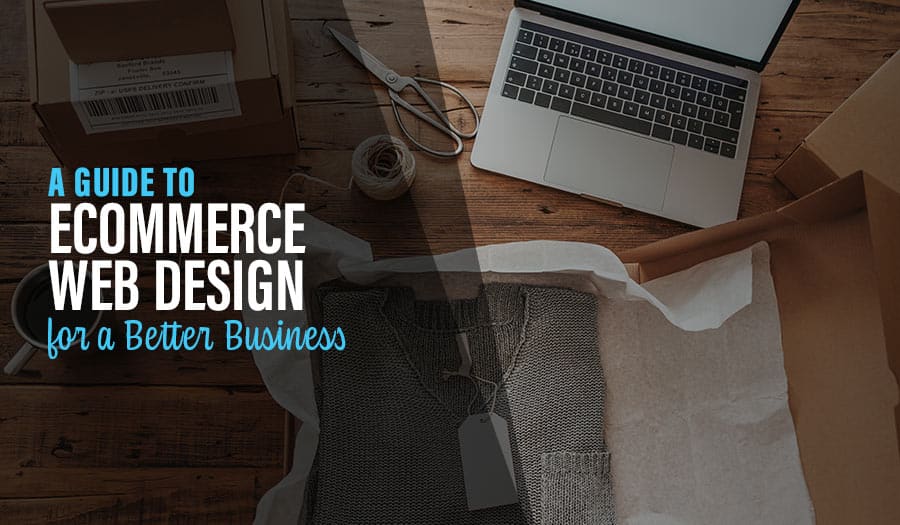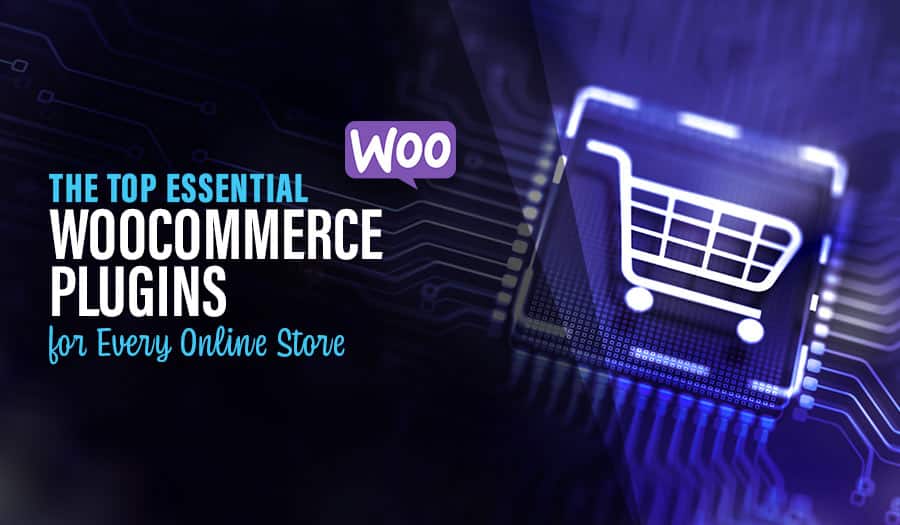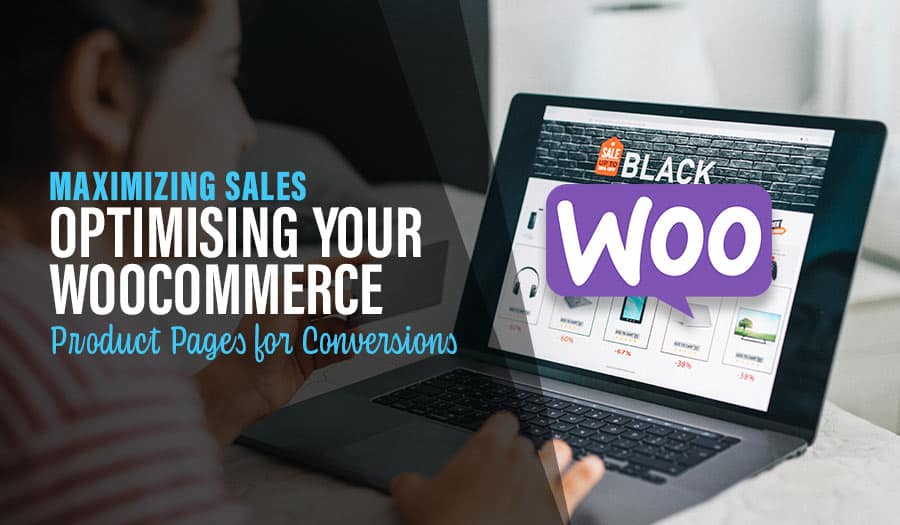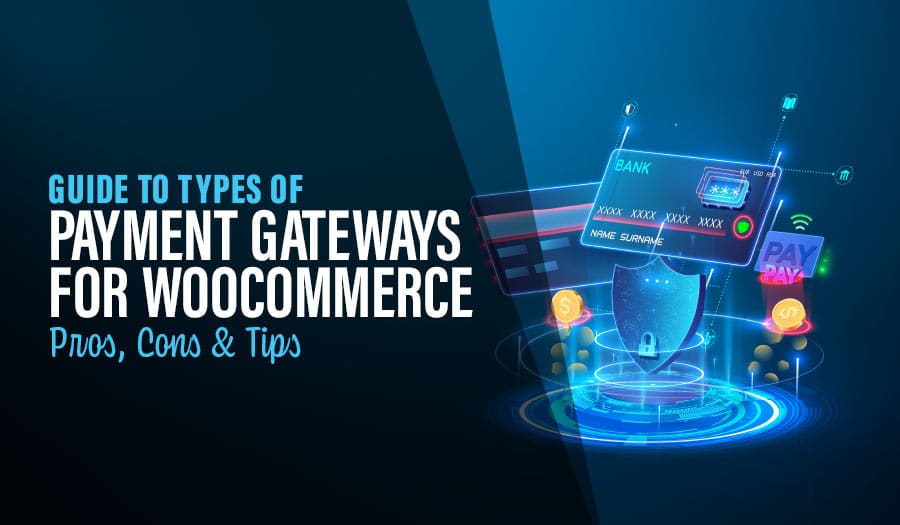Are you set to start your venture into making a prosperous ecommerce website? Web design for online stores can be daunting, but with the right technique, it’s possible for them to boom. This guide is all-encompassing and will cover every crucial element, including best practices and top platforms needed to reach success when creating an ecommerce web page. Get ready – let’s take this journey together as we transform your business!
Short Summary: Guide to Ecommerce Web Design
- Ecommerce web design is essential for creating an engaging and user-friendly experience.
- Optimize product pages, target the right audience, and implement SEO techniques to improve ecommerce website design.
- Select a web design agency with expertise in ecommerce hosting & support to ensure the security & optimization of your site.
Comprehensive Guide to Ecommerce Web Design
- Essential Elements of Ecommerce Web Design
- Best Practices in Ecommerce Website Design
- Top Ecommerce Platforms for Ecommerce Store Web Design
- Tips for Improving Your Ecommerce Website Design
- Choosing the Right Web Design Agency for Your Ecommerce Site
Essential Elements of Ecommerce Web Design
The importance of a successful ecommerce website cannot be underestimated. A captivating design is essential to leave an impact on online shoppers, motivating them to explore and come back for future purchases. To ensure this happens, certain key components should not go ignored – user experience optimization, mobile-friendliness and clear navigation are all musts when it comes to making sure customers get the most out of their shopping journey with you.
Let’s delve into these elements. So that your ecommerce site can thrive!
User Experience
The development of an optimal ecommerce web design must take into account the user experience. To craft a strong connection with your customers, you have to adjust your e-commerce website layout according to their interests and make sure it is visually appealing and easy to navigate. Product photography plays an essential role in this goal because high-quality images on white backgrounds can portray products without any bias or distracting branding elements. This will enhance product appeal for every demographic that visits the site.
Mobile Optimization
With the great amount of time spent on mobiles (4 hours and 23 minutes), optimizing for mobile is an absolute must-have for ecommerce sites. By taking measures such as website layout, ease of use and attractive backgrounds that make them stand out. A well-optimized site makes online stores more accessible for customers worldwide, thus improving user experience and boosting sales potential.
Pure Cycles and Topo Designs are perfect illustrations showcasing how essential a successful mobile optimization can be. These two examples demonstrate just what key features should have been implemented, making sure shoppers get access conveniently no matter where they log in from, which helps maintain the brand identity today’s market calls for!
Clear Navigation
Having user-friendly navigation on an ecommerce website is a must for improving the customer experience and ultimately increasing sales. An effective strategy for doing this is to keep just a few main pages in your header menu while putting other essential links in the footer, making it easier to move around within your site without disrupting its visually pleasing design. This allows customers to browse quickly and find what they need, helping them easily explore all of their various product categories and choices.
Best Practices in Ecommerce Website Design
Now that we’ve delved into the fundamentals of web design for online stores, let’s take a look at some strategies to lift your ecommerce website to new heights. Customer reviews, excellent visuals and an uncomplicated checkout procedure can help your e-commerce website set it apart from its competitors while providing customers with an unforgettable shopping journey.
These practices not only boost appearance but also grant useful information and user-friendly features which will more likely result in customer satisfaction and better sales rates. To discover each method Read on!
Incorporating Customer Reviews
Online shops, such as Pura Vida Bracelets and Verve Coffee Roasters, are great ecommerce websites that prominently feature customer reviews on their product pages. This builds trust with potential customers by providing social proof from thousands of satisfied shoppers plus credible media outlets like BuzzFeed and HuffPost giving five-star ratings. Providing a clear call-to-action – “Shop Now” – Encourages visitors to explore the products while improving brand recognition for increased sales opportunities. By leveraging this strategy, you can strengthen your own ecommerce website so it follows in these top ecommerce website examples’ footsteps!
High-Quality Images
Utilizing photos of exceptional, high-quality photos can be a great way to draw in customers and leave them with a strong initial impression. High-end images, multiple shots for each item, as well as zoom features will present an even more detailed view so visitors may better appreciate your products, which could result in higher customer interest and sales.
Two business examples where top-notch graphics are heavily featured would be Almond Surfboards and Allbirds – both successful at displaying their items through impressive visuals that urge users to explore, what they offer by creating convincing design models with first-class pictures. By investing in high-quality imagery, you’ll have the ability to provide potential customers expect their shoppers with stimulating designs, thus leaving an indelible mark on them over time.
Simplifying Checkout Process
Streamlining the checkout process can bring about a rise in conversions, a decrease in carts left hanging and improved customer pleasure. Crafting an uncomplicated yet articulate payment page including multiple money transfer options along with tracking customers’ steps through a progress bar simplifies the overall shopping experience thus motivating them to finish their transactions.
For instance, Verve Coffee Roasters offers no-charge shipping service while Burrow provides discounts throughout the entire checkout procedure so that carts are reduced while enhancing user satisfaction all at once.
Top Ecommerce Platforms for Ecommerce Store Web Design
Selecting the appropriate platform is vital when constructing an ecommerce website. Shopify and WooCommerce are two of the leading ecommerce platforms that contain a variety of tools to build a successful online store, such as user-friendly interfaces with customizable templates plus built-in SEO options for search engine optimization.
To get more insight into these top platforms, we should take a closer look at what they have to offer users to create great experiences on their sites or stores. From easy usability features like drag-and-drop builders all the way up to advanced customization capabilities, both Shopify and WooCommerce provide something suitable for any level, from beginner to expert.
Shopify
Shopify is an ecommerce platform that provides a convenient way to create and manage businesses’ online stores. With different design templates, access to the app store and unrestricted bandwidth capacity, Shopify offers comprehensive ecommerce solutions for those seeking successful e-commerce websites.
The features of this service include hosting at no cost, personalized domains, ready-made designs, and SEO optimization – facilitating setting up your digital shop efficiently while ensuring customers have a good experience online.
These characteristics help you easily handle your electronic retail outlet leading to the effective functioning of its overall web presence along with maximum gains through extensive sales!
Pros of Shopfiy
- It is easy to set up and manage the store
- Easy integration with third-party applications for payment, accounting, shipping and inventory management
- Comprehensive SEO tools to attract customers
- Variety of design templates for customization as per individual needs
- Access to an app store for further functionalities and features
Cons of Shopfiy
- Limited customization options compared to other ecommerce platforms
- Lack of customer support in some countries
- Higher transaction fees and monthly subscription fees compared to other service providers
- Not all payment gateways are supported by the platform
- Limited control over data security and technical updates
WooCommerce
By taking advantage of WooCommerce, businesses can have a custom-made ecommerce website that meets their requirements and objectives. This open-source platform offers plenty of options for online store design along with features like the capability to offer physical or digital items, manage orders and handle secure transactions.
The benefits this effective tool provides include being highly scalable so it grows as your business grows, integration with WordPress allowing you to get access to a wide selection of themes, plus an extensive range of functionalities that make designing an ecommerce site both cost-efficient & straightforward.
By using WooCommerce when setting up your web presence, you will be able to create a successful ecommerce company thanks to having complete control over its look and operation through personalization possibilities from within this well-rounded system tailored specifically for modern-day merchants in search of establishing themselves digitally without limitations brought forward due to extra charges.
Top Benefits of Using WooCommerce for Your Ecommerce Business
- Secure & Reliable System – WooCommerce offers an incredibly secure and reliable system for your ecommerce store, allowing you to rest easy knowing that your data is safe and secure.
- Easy To Use & Setup – Setting up the system is quick and painless, allowing you to get started quickly with minimal time commitment or technical expertise needed
- Scalable & Flexible – WooCommerce is an incredibly flexible platform that can be scaled up or down as needed, allowing you to easily adjust your store’s offerings to meet customer needs and demands.
- SEO Friendly – The WooCommerce system is built with SEO in mind, allowing you to easily optimize your store for maximum visibility and attract more customers.
- Cost Effective – WooCommerce is a cost-effective solution that saves you money in the long run without sacrificing quality or features.
- Analytics & Reporting – WooCommerce provides detailed analytics and reporting tools, allowing you to track performance metrics such as sales, page views, customer purchases
Tips for Improving Your Ecommerce Website Design
Ensuring the necessary elements and recommended approaches is essential for any successful ecommerce website design. To take it a step further. There are more tips that you can use in order to better optimize your site’s performance. Optimizing product pages, targeting the right audience and utilizing SEO strategies can help guarantee an attractive presence and one that adequately meets customers’ needs.
Let us explore these recommendations deeper so we can understand how they enhance our best ecommerce website design structure leading to greater sales and customer satisfaction rates.
Optimizing Product Pages
Ensuring that product pages are clearly described, accompanied by high-quality product images and user-friendly features, can significantly improve the customer experience and increase sales. By completing research into relevant keywords, you can accurately pinpoint which words should appear on your products’ web pages to enhance their rankings within search engine results.
Promoting traffic towards the home page of a website not only promotes visibility but also creates awareness about available product pages, which could result in more successful transactions for businesses. With concise yet informative content structured onto webpages with data regarding its benefits, customers can quickly locate whatever they need or want from one’s business offerings.
Targeting the Right Audience
For success, your ecommerce website design must be aligned with the right target audience and meets their needs. To make sure this happens, customer segmentation should be utilized in combination with analyzing customer data and introducing appropriate marketing campaigns. As an example of successful targeting tactics, Pura Vida Bracelets offers exclusive discounts to members through its text VIP club, which helps them better understand desired clientele preferences when designing a web page suited just for them, leading to increased conversions from potential buyers visiting the site.
Implementing SEO Techniques
Structuring your ecommerce website for SEO will enable search engines to better understand the site and determine how it should be indexed. This process helps drive organic traffic, in turn resulting in higher sales volume from potential customers who have been made aware of your products through relevant keyword usage within page titles and meta descriptions. Crafting content that is tailored towards a particular target audience can help them access valuable information while being exposed to items you are selling – thereby increasing customer satisfaction as well.
Choosing the Right Web Design Agency for Your Ecommerce Site
When you are choosing a web design agency to create your ecommerce website, it’s crucial that you make an informed decision which can impact the success of your online store. To help with this selection process, take into account certain key aspects such as their level of expertise in creating sites for ecommerce and hosting/support services provided afterwards.
For evaluating potential web designers, consider these points: taking note of their own official site, exploring any relevant awards they may have obtained, studying customer reviews and viewing other design examples from other websites through their portfolio section.
Include all these considerations when making the choice will ensure that the best possible option is found so that your new venture has every chance at succeeding due to strong experience in building successful ecommerce stores being present within said agency.
Evaluating Ecommerce Web Design Expertise
Reviewing their portfolio and technical skills is crucial when considering a web design agency’s capabilities in creating ecommerce sites. The company should showcase several samples product photos of already-designed online stores they have worked on, showing familiarity with coding languages, payment processing systems and other pertinent details related to the task at hand.
By carefully examining an agency’s expertise in ecommerce design and website development, you can ensure that it has all the necessary qualifications to successfully create your own personalized digital store tailored towards achieving your goals.
Ongoing Ecommerce Hosting and Support
Securing and optimizing an ecommerce website requires assessing web design companies’ hosting and support services. These can range from server maintenance, technical help to safety protocols, all of which are necessary for a reliable online shopping experience. When selecting such a provider, one must consider aspects like cost of service, customer care quality, and expertise in this field. To make sure your online store is functioning properly at all times, it’s vital to evaluate these factors thoroughly before deciding on any particular option!
Guide to Ecommerce Web Design Summary
With the right foundation of tools, best practices and a suitable platform, creating an effective ecommerce website is an amazing undertaking that can see your online store thrive in the competitive world. By keeping user experience as a priority along with mobile optimization, clear navigation and powerful SEO strategies you are well-placed to make this journey successful for your online business! Now it’s time to set off on this mission, transforming your online shop into something exceptional.
Frequently Asked Questions
What is ecommerce in web design?
Web design for eCommerce is a process of making an online store where customers can easily buy items and vendors can offer them without needing to be physically present in the shop. It involves designing and creating a professional website, establishing secure payment methods, and developing an interface that makes it easy for visitors to browse the site effortlessly. Web designers should create user-friendly elements so shoppers can easily locate products they want to purchase quickly. All these efforts come together, allowing retailers and buyers alike to enjoy fast transactions via this type of digital marketplace environment.
How do I build an ecommerce website?
If you want to construct an ecommerce website, the most logical starting point is selecting and purchasing a domain name as well as deciding on which platform best suits your needs. You may also wish to consider personalizing a template or finding assistance from experienced web developers who can assist with more complex parts of building the site. Once those steps are complete, adding products should follow suit shortly after along with setting up payment & shipping options that meet any specific criteria set out by yourself or customers alike. Depending upon how intricate the venture will be, it’s feasible for this entire process to be finished within days, there are plenty of helpful guides available online that guide at each stage too!
How much does it cost to build an ecommerce website?
The cost of building an ecommerce website can vary, depending on the requirements and expertise of those involved. Speaking, smaller to medium-sized businesses usually spend between $1,000 – 10K each month for marketing activities while larger corporations require a budget in excess of $5K-$15K per thirty days.
What are the essential elements of ecommerce web design?
When creating an ecommerce website, user experience, mobile optimization and intuitive navigation are essential components of web design. Every aspect must be carefully taken into account to ensure customers have a pleasant journey on the site.
All features should come together for optimal results. Ensuring visitors will find what they need with minimal effort and enabling them to seamlessly complete purchases or tasks without any difficulty is vital in building successful websites.
To accomplish this goal, there needs to be well-thought-out and attractive content.
Take your business to the next level with a Pixel Fish Website.
Check out some of our latest Website Design projects.
View some case studies of our website design work:
Thriviae
Othman Lawyers
Arena Mars
Joe Pien Chartered Accountants
Further Information
Why you should use Elementor for your new WordPress Website
Social Media Campaign
6 Reasons Why You Should Use WordPress for eCommerce
How to Create the Perfect WooCommerce Website
How to Optimize Your eCommerce Website Design to Drive More Sales
Harness the Power of WooCommerce for Your Small Business Website Design
Why Displaying Social Media Reviews On Your Website Is Great For Business



